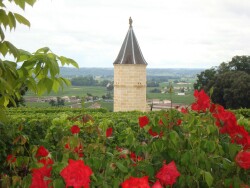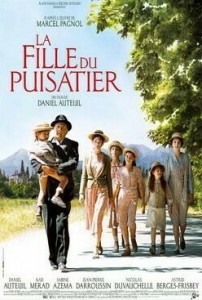Médoc, Graves, Entre-Deux-Mers, Pomerol, Sauternes, Saint-Emilion…. What do these poetic-sounding names have in common? You are right of course if you answered Bordeaux Wines! Bordeaux is the greatest wine-producing region of the world!

Located in the Aquitaine region of south-western France, Bordeaux is one of France’s largest cities with a population well over 200,000. It lies thirteen miles up the coast where the Garonne and Dordogne rivers meet, and Bordeaux’s great harbor bustles with maritime traffic from all over the world. It comes as no surprise that the name “Bordeaux” literally means: “beside the waters” (au bord des eaux).
This is one region of France that oenophiles (wine-lovers) will not want to miss, for Bordeaux wines offer something for everyone’s taste: from light, sophisticated red wines to robust, full-bodied ones, from dry white wines to luscious sweet whites, even sparkling rosés and whites produced à la méthode champenoise.
Visiting the famous vineyards of Bordeaux is a must for the thirsty traveler and makes for easy day excursions as they lie all around the city: Pomerol and Saint-Emilion to the east, Entre-Deux Mers to the southeast, Sauternes to the south, Graves to the southwest and west, and the Médoc and the Haut-Médoc to the northwest.
A votre santé!

 Playing the well digger of the movie’s title, Auteuil gives a remarkable performance as a fiercely stubborn widower of a family of six daughters. Although marketed as a love story between his eldest daughter and the son of a wealthy shopkeeper who is called off to war, the film cleverly interweaves the themes of the complex bond between a father and his daughter, social inequity and class distinction, family honor, and the devastating effects of war.
Playing the well digger of the movie’s title, Auteuil gives a remarkable performance as a fiercely stubborn widower of a family of six daughters. Although marketed as a love story between his eldest daughter and the son of a wealthy shopkeeper who is called off to war, the film cleverly interweaves the themes of the complex bond between a father and his daughter, social inequity and class distinction, family honor, and the devastating effects of war.
 Actually, it is. The movie was filmed in the real village called Bergues, situated just a few miles south of Dunkirk. Here you can visit most of the places seen in the movie: the bell tower in the town square, the outdoor café where Philippe crashes his bike, the lingerie shop where Philippe runs into famous French actress Line Renaud (who plays Dany Boon’s mother in the movie), and the restaurant at which one of the funniest scenes in the movie takes place.
Actually, it is. The movie was filmed in the real village called Bergues, situated just a few miles south of Dunkirk. Here you can visit most of the places seen in the movie: the bell tower in the town square, the outdoor café where Philippe crashes his bike, the lingerie shop where Philippe runs into famous French actress Line Renaud (who plays Dany Boon’s mother in the movie), and the restaurant at which one of the funniest scenes in the movie takes place.



 French music: how about the First Lady’s new album? Carla Bruni’s “Comme si de rien n’était” is soft and easy listening, or for a different style, try pop singer ZAZ, (album of the same name) whose sassy original sound has taken France by storm. Both available on Amazon.
French music: how about the First Lady’s new album? Carla Bruni’s “Comme si de rien n’était” is soft and easy listening, or for a different style, try pop singer ZAZ, (album of the same name) whose sassy original sound has taken France by storm. Both available on Amazon. Signature French cocktails: try a French martini made with the incomparable black raspberry liqueur crafted at the Château de la Sistière in the Loire Valley. Mix 15 ml of Chambord, 50 ml vodka, 60 ml fresh pineapple juice. C’est merveilleux!
Signature French cocktails: try a French martini made with the incomparable black raspberry liqueur crafted at the Château de la Sistière in the Loire Valley. Mix 15 ml of Chambord, 50 ml vodka, 60 ml fresh pineapple juice. C’est merveilleux! 
